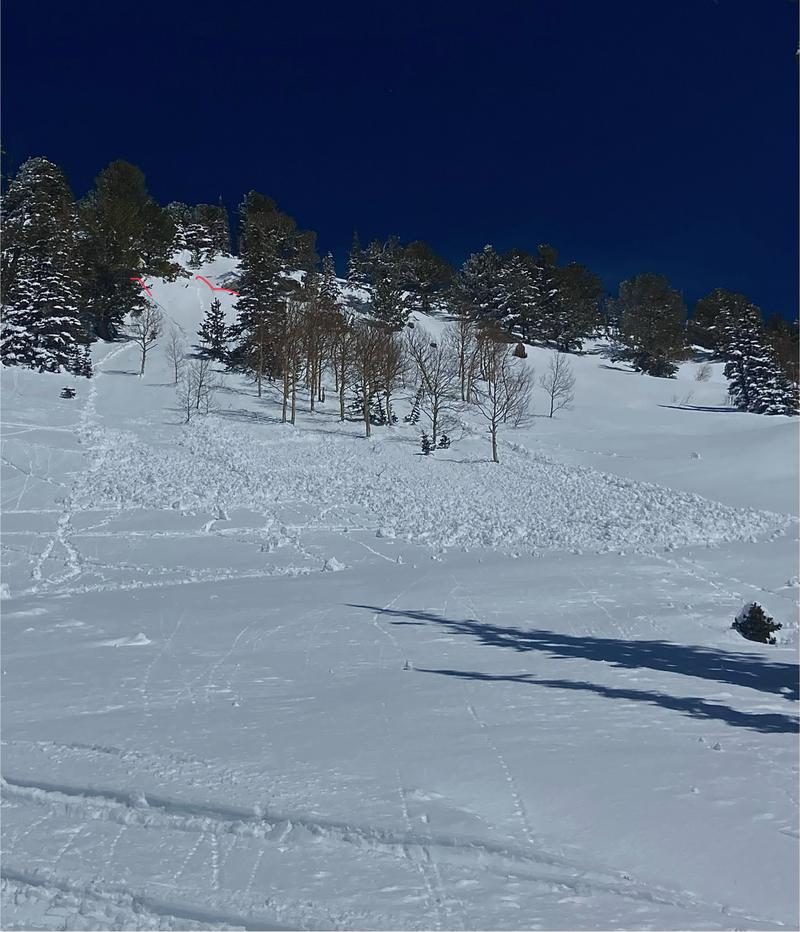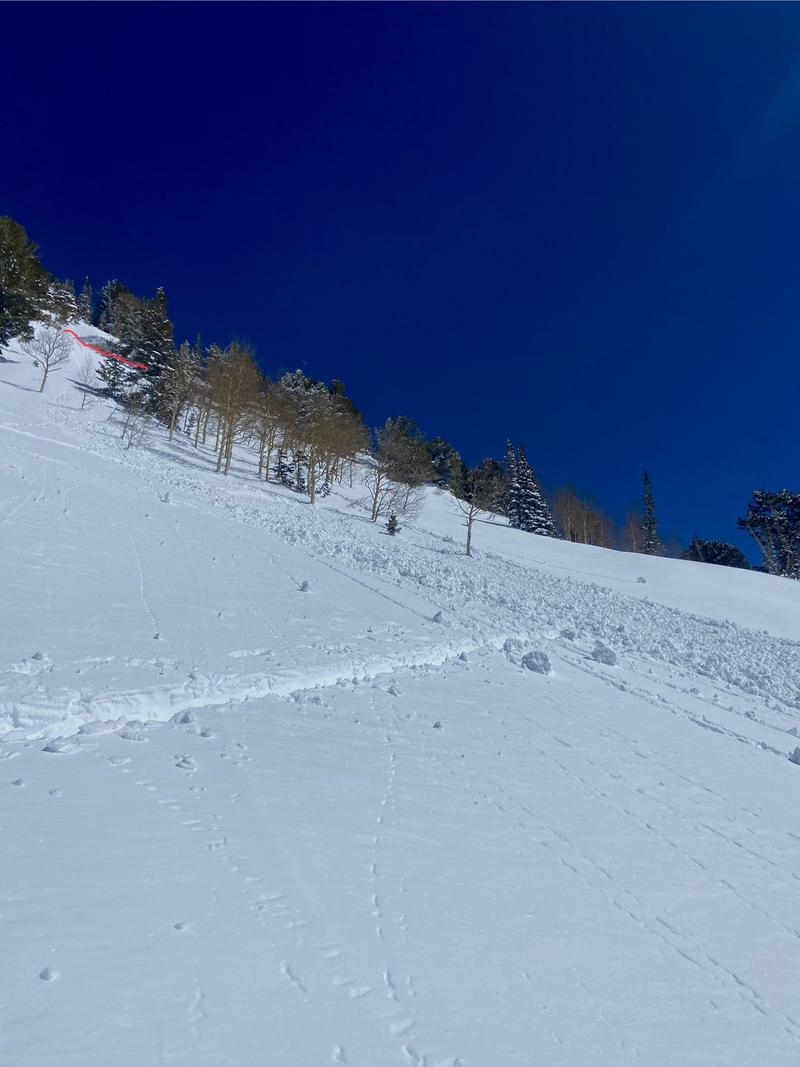Observer Name
M. O'Brien
Observation Date
Friday, March 15, 2024
Avalanche Date
Friday, March 15, 2024
Region
Salt Lake » Little Cottonwood Canyon » Microwave
Location Name or Route
Microwave
Elevation
9,600'
Aspect
Southwest
Slope Angle
Unknown
Trigger
Skier
Avalanche Type
Wet Slab
Avalanche Problem
Wet Snow
Depth
8"
Width
80'
Vertical
300'
Snow Profile Comments
Failure on the new snow, old snow interface. No wind-loading in this area was observed, winds were visibly transporting new snow away from the area.
Comments
While setting the skin track up (for our party of 2), I observed winds visibly transporting new snow away from the area we were traveling. There was about 12" of new snow that stuck around in the microwave area. At 1-2:00PM, we were surprised to feel that the new snow was still soft and powdery. There was no sign of any sun-crust and we were lured into a side quest for fresh turns on an un-tracked slope just outside the Alta Ski Area Boundary (first photo). Just to mention, this 'side quest' was never part of our plan for the day...
By 3:00PM the new snow was finally starting to feel wet and heavy. The snow surface began to warm rapidly from 2:00PM-3:00PM. We reached a steeper section (about 35+ degrees) about 30 yards away from where we would transition at 2:20PM (second photo). In my head, I was debating whether I should continue through the steeper section above and I did not verbalize this to my partner (mistake).
Rather than asking my partner what he thought, I continued setting the skin track upward. After two switchbacks, we first heard a rumble then branches breaking, looked up, and saw a D1-2 avalanche headed straight towards us. We quickly responded by moving out of the way and neither of us was caught. The avalanche was slow-moving and a combination of a wet loose/slab that broke on the new/old snow interface (third photo). The third photo shows a point release connected to a small crown (about 8" deep). The crown and point release hugged a cliff band that had been baking in the sun for hours (traveling below a cliff band during a period of rapid warming (big mistake)). The avalanche was 8-12 inches deep, 80 feet wide, and ran about 260 feet down the slope.
It's hard to say whether this avalanche was natural or remotely triggered by our party. Upon further examination of the photos, several sluffs occurred during that period (fourth photo).
This avalanche was not large enough to bury someone. However, it certainly had enough force to catch and carry a rider. Considering the terrain, the slide was harmless to us as we were near the toe of the avalanche (it came to a halt when the slope reached 25-30 degrees (second photo). Although we made mistakes, one thing I believe we did well was travel in generally non-consequential terrain throughout the day. There were no terrain traps or cliffs below us, only a gentle slope. On a larger slope and in more consequential terrain, the avalanche would have certainly run longer, had the force to carry a rider, and picked up enough snow to potentially bury them.
Once we continued up the steeper section into the upper elevation band, my instincts told me I was pushing a little too far, a little too late in the day, and I should have listened. Thankfully the situation was 'manageable' and we were able to move out of the way. I learned from this experience and hope others can also.






Coordinates



